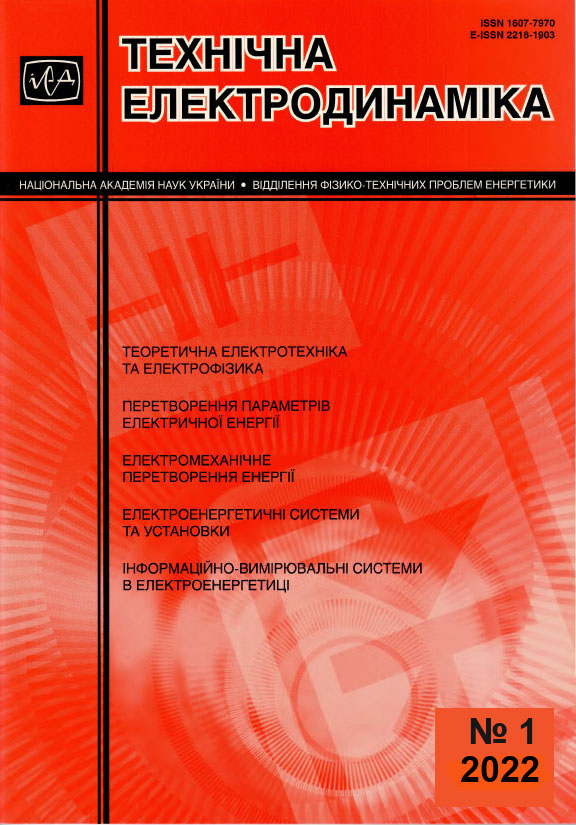Abstract
The influence of various factors that can affect the efficiency of pulsed barrier discharge treatment in the air of atmospheric pressure of a model sample of contaminated water in the droplet-film state was investigated. The impurity in the water was an organic dye (methylene blue) with an initial concentration of 50 mg / l. Water consumption was 2–4 l / min, the characteristic diameter of the droplets was 1.7 mm, and the film thickness at the electrodes was about 0.15 mm. The water was treated in a flat discharge chamber with gas gaps of 3.36 mm and glass dielectric barriers, and in addition in an ozonation chamber, which used ozone that had not previously been useful. The discharge was excited by short ~ 100 ns pulses from voltage up to 21 kV, which provided the current density amplitude up to 1.7 A / cm2 and their energy up to 140 mJ. The decomposition time of the impurity and the energy efficiency of the discharge depending on the pulse repetition frequency of 25–300 Hz were studied. The discharge had the highest energy efficiency at frequencies of 25-50 Hz, at which the energy yield, which corresponds to 50% decomposition of the impurity, reaches ≈270 g / kWh, and for 90% decomposition − 60 g / kWh. As the pulse energy increases, the transparency of the solution for ultraviolet light increases, which is associated with the splitting of stable benzene rings that is part of the impurity molecule. No noticeable effect of water and gas consumption (0.36-1.5 l / min) on the research results was found. References 16, figures 8.
References
Patrick Vanraes, Anton Y. Nikiforov and Christophe Leys. Electrical Discharge in Water Treatment Tech-nology for Micropollutant. Plasma Science and Technology. Progress in Physical States and Chemical Reactions. 2016. Chapter 15. Pp. 429−476. DOI: https://doi.org/10.5772/61830.
Muhammad Arif Malik. Water Purification by Plasmas: Which Reactors are Most Energy Efficient? Plasma chemistry and plasma processing. 2010. Issue 30. Pp. 21−31. DOI: https://doi.org/10.1007/s11090-009-9202-2 .
Bo Jiang, Jingtang Zheng, Shi Qiu, Qinhui Zhang, Zifeng Yan, Qingzhong Xue. Review on electrical dis-charge plasma technology for wastewater. Chemical Engineering Journal. 2014. Issue 236. Pp. 348-363. DOI: https://doi.org/10.1016/j.cej.2013.09.090
David B. Miklos, Christian Remy, Martin Jekel, Karl G. Linden, Jorg E. Drewes €, Uwe Hübne. Evaluation of advanced oxidation processes for water and wastewater treatment − A critical review. Water Research. 2018. Vol. 139. Pp. 118−131. DOI: https://doi.org/10.1016/j.watres.2018.03.042
Yavorovskiy N.A., Kornev Ya.I., Preis S.V., Pelchtsman S.S., Haskelberg M.B., Chen B.N. Active oxidiz-ing particles in water-air flow. Bulletin of the Tomsk Polytechnic Institute. 2006. Vol. 309. Issue 2. Pp. 108-113 (Rus).
Bozhko I.V., Kondratenko I.P. Efficiency of treatment of aqueous solution of methylene blue via exposure to pulse dielectric barrier discharge to the surface. Tekhnichna elektrodynamìka. 2018. Issue 6. Pp. 89–97. (Ukr) DOI: https://doi.org/10/15407/techned2018.06.089
Bereka V.O., Bozhko I.V., Kondratenko I.P. Research of energy efficiency of processing by pulse barrier discharge of water in a drop-film state. Tekhnichna elektrodynamìka. 2021. Issue 3. Pp. 50–57. (Ukr.) DOI: https://doi.org/10/15407/techned2021.03.050
Walsh J.L., Konga M.G. 10 ns pulsed atmospheric air plasma for uniform treatment of polymeric surfaces. Applied Physics Letters. 2007. Vol. 91. P. 251504 (3 pp). DOI: https://doi.org/10.1063/1.2825576
Bozhko I.V., Serdyuk Y.V. Determination of Energy of a Pulsed Dielectric Barrier Discharge and Method for Increasing Its Efficiency. IEEE Transactions on Plasma Science. 2017. Vol. 45. Issue 12. Pp. 3064–3069. DOI: https://doi.org/10.1109/TPS.2017.2760888
Piskarev I. The formation of ozone-hydroxyl mixture in corona discharge and lifetime of hydroxyl radi-cals. IEEE transactions on plasma science. 2021. Vol. 49. Issue 4. Pp. 1363–1372. DOI: https://doi.org/10.1109/TPS.2021.3064785
Fangmin Huang, Li Chen, HonglinWang, Zongcheng Yan. Analysis of the degradation mechanism of methylene blue by atmospheric pressure dielectric barrier discharge plasma. Chemical Engineering Journal. 2010. Vol. 162. Pp. 250–256. DOI: https://doi.org/10.1016/j.cej.2010.05.041
Taichi Sugai, Akira Tokuchi, Weihua Jiang. Effects of Pulsed Power Control on Plasma Water Treatment Using LTD. IEEE Transactions on Plasma Science. 2018. Vol. 46. Issue 10. Pp. 3566−3573. DOI: https://doi.org/10.1109/TPS.2018.2825468
Biljana P. Dojchinovich, Goran M. Roglicb, Bratislav M. Obradovich, Milorad M. Kuraicaca, Mirjana M. Kostich, Jelena Nesich, Dragan D. Manojlovich. Decolorization of reactive textile dyes using water falling film dielec-tric barrier discharge. Journal of Hazardous Materials. 2011. Issue 192. Pp. 763–771. DOI: https://doi.org/10.1016/j.jhazmat.2011.05.086
Taichi Sugai, Yasushi Minamitani. Influence of Rise Rate of Applied Voltage for Water Treatment by Pulsed Streamer Discharge in Air-Sprayed Droplets. IEEE Transactions on Plasma Science. 2013. Vol. 41. Issue 8. Pp. 2327–2334. DOI: https://doi.org/10.1109/TPS.2013.2271319
Song Jiang, Yiyong Wen and Kefu Liu. Investigation of Pulsed Dielectric Barrier Discharge System on Water Treatment by Liquid Droplets in Air. IEEE Transactions on Dielectrics and Electrical Insulation. 2015. Vol. 22. Issue 4. Pp. 1866−1871. DOI: https://doi.org/10.1109/TDEI.2015.7179142

This work is licensed under a Creative Commons Attribution-NonCommercial-NoDerivatives 4.0 International License.
Copyright (c) 2022 Tekhnichna Elektrodynamika


